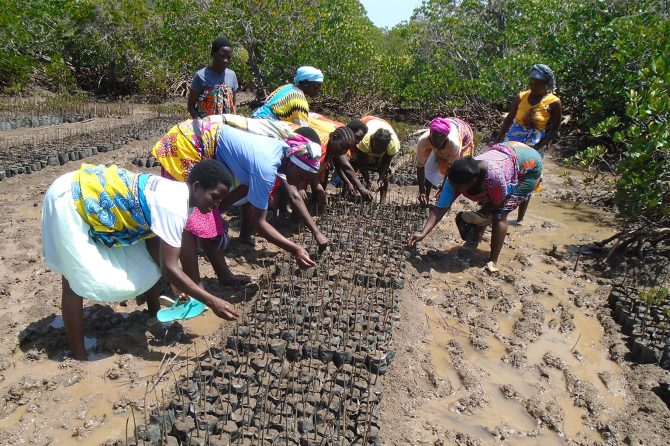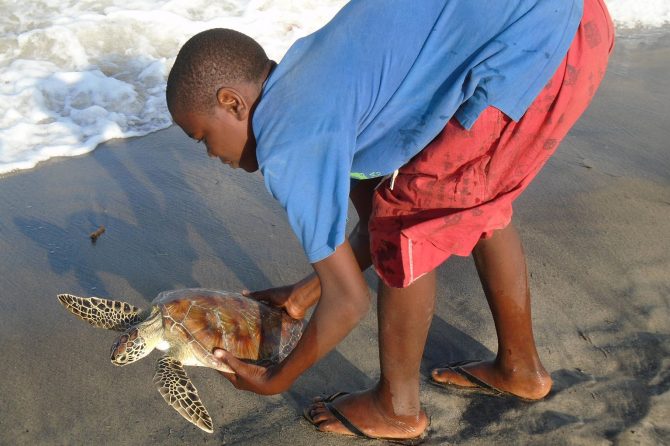2016 KENYA
Strengthening Community Participation in Biodiversity Conservation through Benefit Sharing and Capacity Building
Community Based Environmental Conservation (COBEC)
Community / field-based implementation
Seascape
Overview
Poverty, increasing population pressure, and lack of education and awareness, commonly result in destructive practices in marine environments, as happened in the coast of Marereni in Kenya. Moreover, lack of capacity of local communities in natural resource management, weak governance and mangrove destruction were leading to unsustainable utilisation of mangrove resources, altering forest ecosystems and diminishing carbon sequestration capabilities. In response, the specific objectives of this project were: (1) To strengthen local capacity to adapt to climate variability and change including strengthening environmental governance systems; (2) To enhance mangrove forest protection and management including reforestation and livelihood enhancement; and (3) To protect and conserve sea turtles and their habitat.
Key achievements
- The project achieved important environmental benefits such as rehabilitating destroyed mangrove forests, restoring the breeding sites for fish and contributing to the increase of the global sea turtle population.
- The project mobilised community groups and overcame the challenge of restoring sites where mangroves had been depleted by salt firms and the local community. Planting of approx. 60,000 trees in community farms has led to a change of attitude of the community which previously was purely dependent on mangrove wood/fuel products for sale and making of charcoal.
- There is great change in attitude and perception relating to sea turtles in the area. Reported turtle killing and capture have decreased almost by 50% following the awareness campaign and surveillance through joint patrols.
- Education programmes and specific training have greatly empowered the local community in knowledge and skills. About 70% of the local fishermen and other marine resources users are aware of the interconnectedness of the marine environment, e.g. that the loss of one species can ruin the entire ecosystem.
- The introduction of alternative livelihoods has seen beneficiaries earn income through sale of products from the income generating activities implemented by the project, such as beekeeping, fishing, poultry and vegetable growing. This has motivated community members to support project implementation.
Lessons
- Natural resource conservation and protection is possible through stakeholder and community involvement. The introduction of income generating activities reduces pressure on marine resources and the introduction of community-managed woodlots reduces pressures on mangroves by providing alternative wood products.
- Conservation may not be possible without introducing alternatives to the local community who solely depend on natural resources for their livelihood. Income generating activities reduced dependence on natural resources thereby reducing pressure on ecosystems.
Project location
Organisation

Community Based Environmental Conservation (COBEC)
- Sector
- Non-governmental organisation
- Country
- Kenya
Relevant projects
Projects of the same year
Aichi Biodiversity Targets
Aichi Biodiversity Targets
-
Awareness increased
-
Incentives reformed
-
Sustainable production and consumption
-
Habitat loss halved or reduced
-
Sustainable management of marine living resources
-
Sustainable agriculture, aquaculture and forestry
-
Ecosystems and essential services safeguarded
Sustainable Development Goals
Sustainable Development Goals
-
Zero hunger
-
Life below water
-
Life on land

